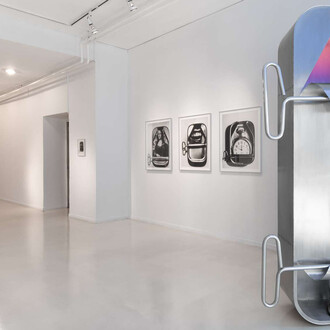The 26th Biennial of Design, curated by Austrian design curator and cultural producer Thomas Geisler together with assistant curator Aline Lara Rezende, is taking on one of the greatest challenges of our time: information. Under the motto Common Knowledge, this year’s Biennial of Design tackles the information crisis.
Working with content, structures, and stakeholders, the 26th Biennial of Design in Ljubljana, BIO 26| Common Knowledge, hopes to find ways, unearth projects, and explore concepts and systems that can serve to turn this disruptive chaos in and of information into creative knowledge clusters. The notion of “common knowledge” relates and refers to what people know; more broadly, it refers to what people think and how they structure their ideas, feelings, and beliefs. Furthermore, the term “common knowledge” carries a sense of communal or shared knowledge.
In an attempt to pin down the comprehensive theme, BIO 26| Common Knowledge adopted the data– information–knowledge–wisdom (DIKW) Knowledge Hierarchy diagram. The DIKW system will be used as a base to structure the central exhibition, commissions, catalogue and public programs at BIO 26| Common Knowledge. The central exhibition and accompanying catalogue, which will be released as a magazine of 5 issues, will be divided into five thematic chapters: the four components of the pyramid diagram -data, information, knowledge, and wisdom- and one introductory chapter dedicated solely to the 'information crisis' as a whole.
BIO 26| Common Knowledge will be organized around a central exhibition of already existing projects that will be presented at MAO, and six major commissioned experimental projects by multidisciplinary teams selected through a designathon process. These will be displayed at and with partnering institutions central to knowledge production and dissemination, such as a museum (in this case Museum of Modern Art plus Museum of Contemporary Art Metelkova), library, university, and news and media organization, as well as a botanical garden and retirement home.
BIO 26| Common Knowledge is organized around a central exhibition of historic and contemporary projects that will be presented at MAO, the Museum of Architecture and Design in Ljubljana. At the central exhibition prominent works of Superflux, Dunne & Raby, Otto Neurath, Orson Welles, Viktor Papanek, Forensic Architecture, Otl Aicher, acclaimed infographist Jaime Serra, editorial designers Mark Porter & Francesco Franchi and the intrinsic Institute of Patent Infringement project will be on show. The 26th Biennial of Design is proud to collaborate with international partners, such as ZKM | Center for Art and Media Karlsruhe, Germany and MU Eindhoven from The Netherlands. Both are showing exciting exhibitions on the framework of the biennial.
This year, the curatorial team decided to use a different approach for the commissioned projects. Up until now, hackathon events are a known part of the design and innovation world, and for the first time this methodology was used to commission projects for a biennial/exhibition purpose. After an open call and two designathons (a hackathon with a design and curatorial twist) in May and July, the nominated teams of the 6 commissioned projects presented their final concepts during the show off at MAO.
An international jury of prominent experts — renowned Slovenian innovation scholar Aleš Pustovrh, curator at the Vitra Design Museum Amelie Klein, accomplished writer and director of the Design Museum in London Deyan Sudjic, professor of philosophy and fine art and a senior research tutor at the Royal College of Art in London Johnny Golding and curator at Museum of Architecture and Design in Ljubljana Maja Vardjan —selected the best projects by institution to progress to the next phase. Their projects received funds to be developed further into validated prototypes, installations, services, or systems to be exhibited during the biennial. The teams were guided by international design mentors: Commonplace, Paolo Patelli, Apolonija Šušteršič, Kathrina Dankl, Futurefarmers in Bureau d'études, their works will also be included in the central exhibition at MAO.
















